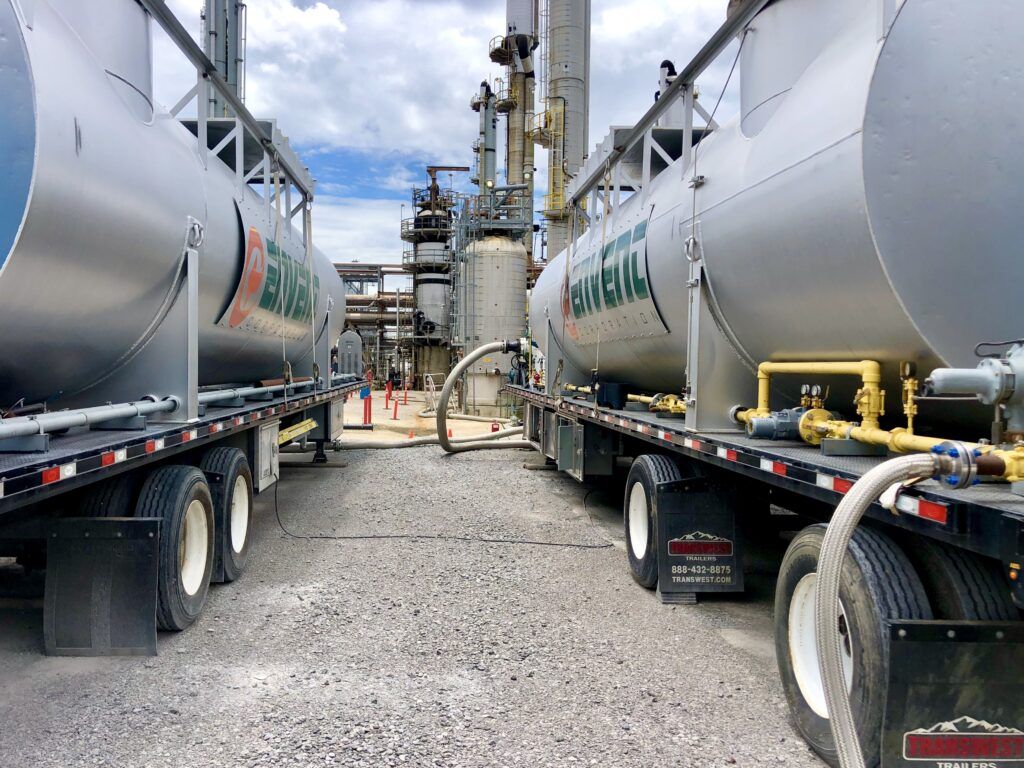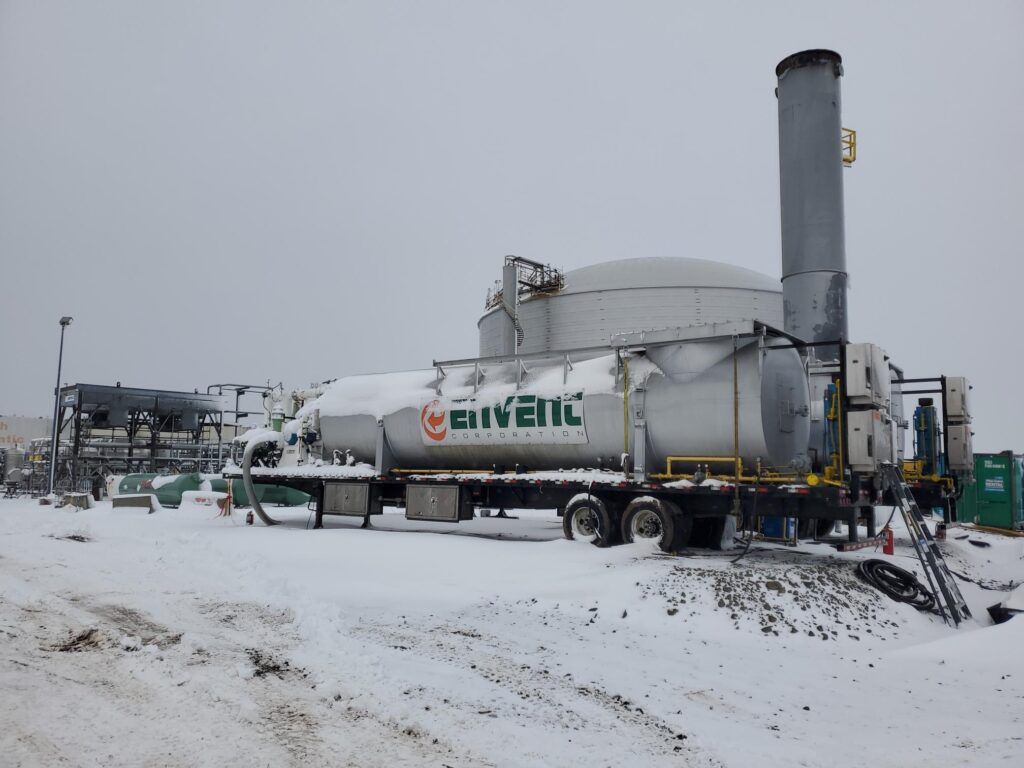Know the Facts and Eliminate the Risk!
Safety, Exposure and Environmental Concerns.
Degassing of tanks and vessels of toxic chemicals such as, toluene, benzene, gasoline, hydrogen sulfide, and other regulated volatile organic compounds (VOCs) into an uncontrolled area has serious safety, exposure and environmental concerns. Gasoline vapors are heavier than air and will find low pockets to rest. These vapors can often be an explosive mixture with the right mixture of air and flammable vapor to ignite. Degassing safely is critical to an incident free tank, vessel or sphere turnaround or maintenance project.
The use of Envent’s Certified Degassing Unit
Since controlling these vapor is the norm in most areas now, using a certified degassing unit which can include a thermal oxidizer, combustion unit, or mobile scrubber, the informed customer will need to ensure both the operation and the vapor control are performed safely. This is the most dangerous work in the plant. Many incidents have occurred over the years, most of which you never hear about unless they make the news. The vacuum truck explosion in the refinery in England in 2013 taught us just how important it is to have proper grounding and bonding. The incident in Texas City is another. Vapors must be treated with respect. Since 1995, we have witnessed 15 poorly prepared and executed projects that have caused catastrophic equipment damage caused by fires. The common link in all incidents seems to be a lack of proper preparation combined with poor execution. Nine of those projects caused by pyrophoric iron and no plan for mitigation, something that is very often overlooked; 3 were caused by static ignition from lack of grounding and bonding and 3 by detonations from flashback caused by equipment lacking properly engineered safety devices.
Extensive Training and Experience
Before selecting a contractor to handle your flammable vapors, be sure to select a contractor that has extensive training and experience. Operators should fully understand proper classification for flammable and combustible liquids, grounding and bonding, static discharge potentials, the hazards and mitigation methods for pyrophoric iron, operational issue controls, Equipment has been HAZOP’d, placement of equipment, coordination with cleaner while they are removing residual product, water washing and external environmental factors.
A few of the elements from Envent’s Checklist include:
- Job Walk – Knowledge of the site, location and surroundings.
- Planning and Preparing – A Safe Work Execution Plan
- Mitigation of Risks – Address risks and mitigate them.
- Job Safety Analysis – involving safe execution of mobilization and setup.
- Compliance Testing Plan – Permits, instrument calibration and testing
- Test Atmosphere – Atmospheric testing plan.
- Grounding & Bonding – Our team ensures that bonding and grounding are implemented to eliminate any potential source of sparks.
- Reporting & Communication. Communicate hazards, raise the flag and report up when needed.
- Provide compliance report upon project completion.
Owners must remember that bringing a tank, vessel, sphere or barge through the explosive range is dangerous and only specialized contractors should be used. Remember to select a contractor that has a high safety rating as well as a superior environmental compliance record. Most importantly, Experience Matters! Laser like focus is what you want on this hazardous operation. A specialist is what is needed. Someone who does this 24 hours a day, 7 days per week, 365 days per year and is not distracted by other operations. The risk of a fire, explosion or Notice of Violation is too great of a risk to trust to a subpar service provider.
Check your contractors rating here: ISNETworld Rating.
Eliminate Exposure to Employees, Contractors and Neighbors.
Gasoline vapors are heavier than air and when they are blown out of the tank using a fan blower, personnel in the area are exposed. The 8 hour Permissible Exposure Limit (PEL) for benzene and gasoline is 1 ppmv and 300 ppmv, respectively. At 1000 feet from a manway, the benzene concentration will easily exceed these limits, therefore, in many communities fence line monitoring is now required.
Benzene (Toxic and Hazardous Substances)
Communities in many Houston area refinery communities have recently forced plants to install fence line monitors. These monitors detect benzene down to 10 ppb. To avoid the exposure, tank degassing may be operated down to 1% LEL and mobile vacuum truck scrubbers used for control vapors containing H2S, VOCs, Benzene, Sour Naphtha or other volatile material.
Check out some of Envent’s recent degassing featured projects below!




